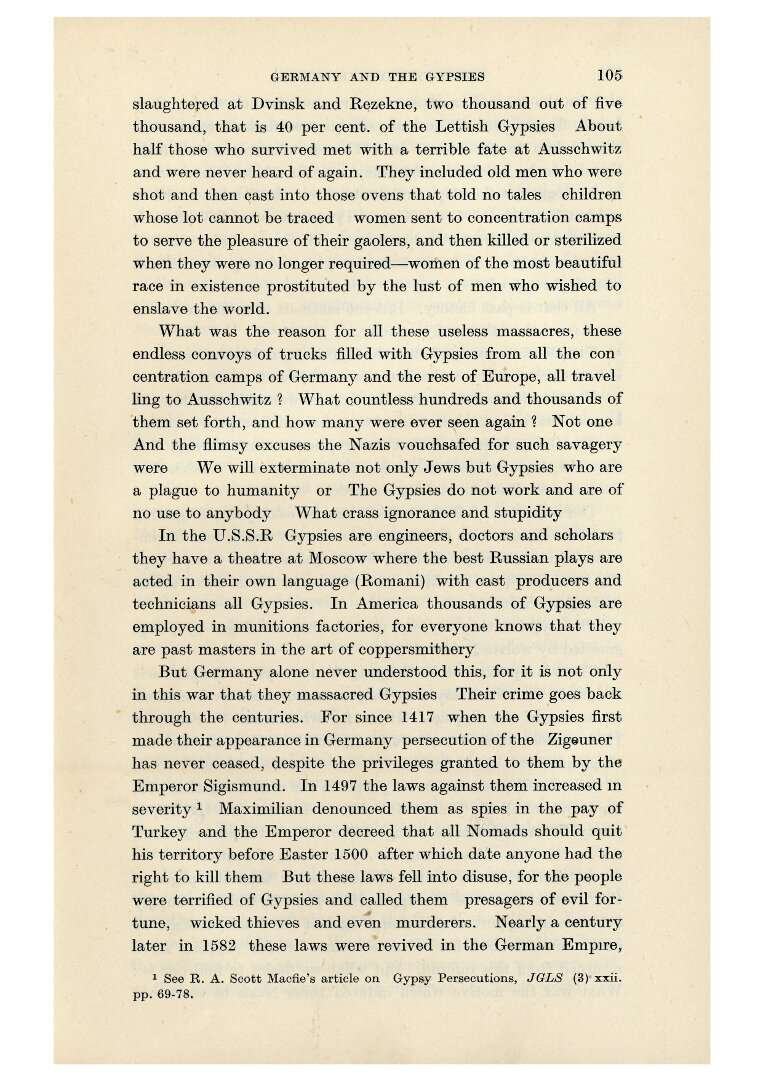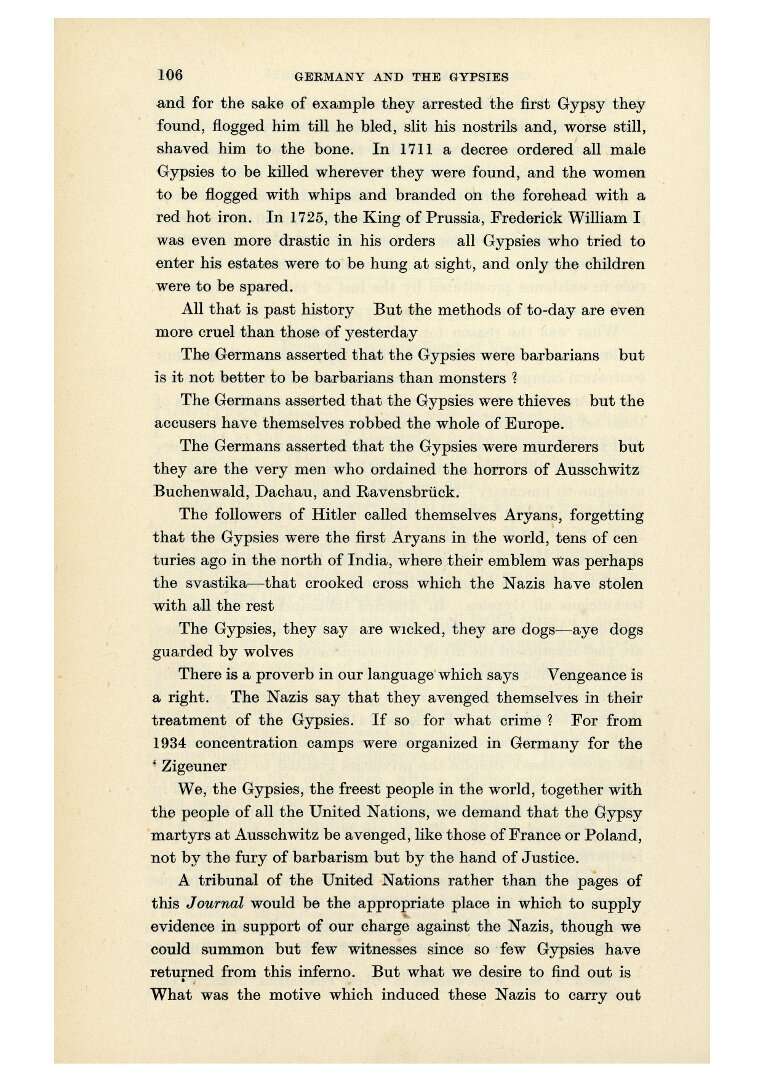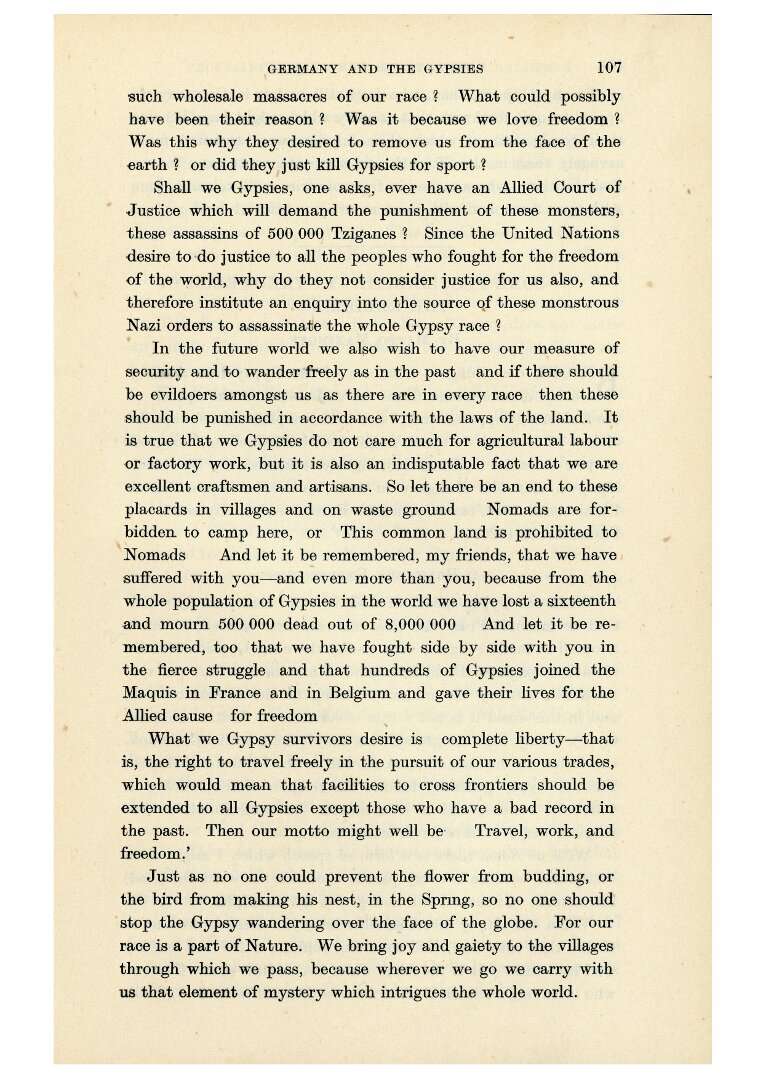Germany and the Gypsies: From the Gypsy’s Point of View
by Matéo Maximoff
Fourteen thousand Gypsies were massacred in a single night at the camp of Ausschwitz [sic] in the gas-chamber or in the crematoria. This happened in 1943, but who knows how many were killed before and after this date?
Before the War there were settled in the Balkans from three to four million Gypsies, and of this number no one can trace how many have survived. For, like the Jews, our race has been swept out of Europe by a nation of ›over-Lords,‹ who wanted to enslave all the nations they could not eliminate.
[…]
We, the Gypsies, the freest people in the world, together with the people of the United Nations, we demand that the Gypsy martyrs at Ausschwitz [sic] be avenged, like those of France or Poland, not by the fury of barbarism but by the hand of Justice.
A tribunal of the United Nations rather than the pages of this Journal would be the appropriate place in which to supply evidence in support of our charge against the Nazis, though we could summon but few witnesses since so few Gypsies have returned from this inferno. But what we desire to find out is: What was the motive which induced these Nazis to carry out such wholesale massacres of our race? What could possibly have been their reason? Was it because we love freedom? Was this why they desired to remove us from the face of the earth? Or did they just kill Gypsies for sport?
Shall we Gypsies, one asks, ever have an Allied Court of Justice which will demand the punishment of these monsters, the assassins of 500,000 Tziganes? Since the United Nations desire to do justice to all the people who fought for the freedom of the world, why do they not consider justice for us also, and therefore institute an enquiry into the source of these monstrous Nazi orders to assassinate the whole Gypsy race?
[…]















